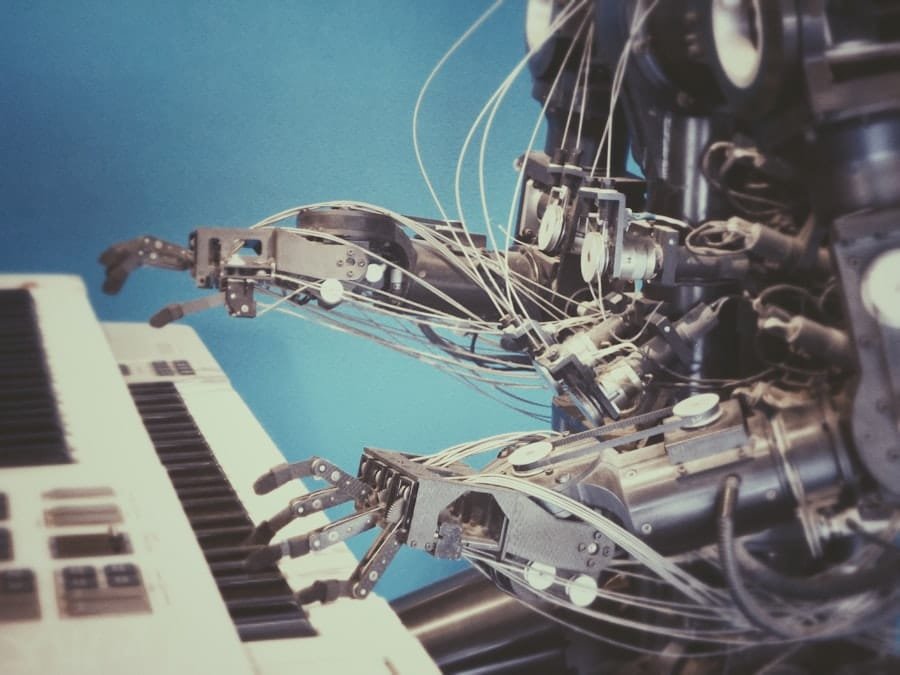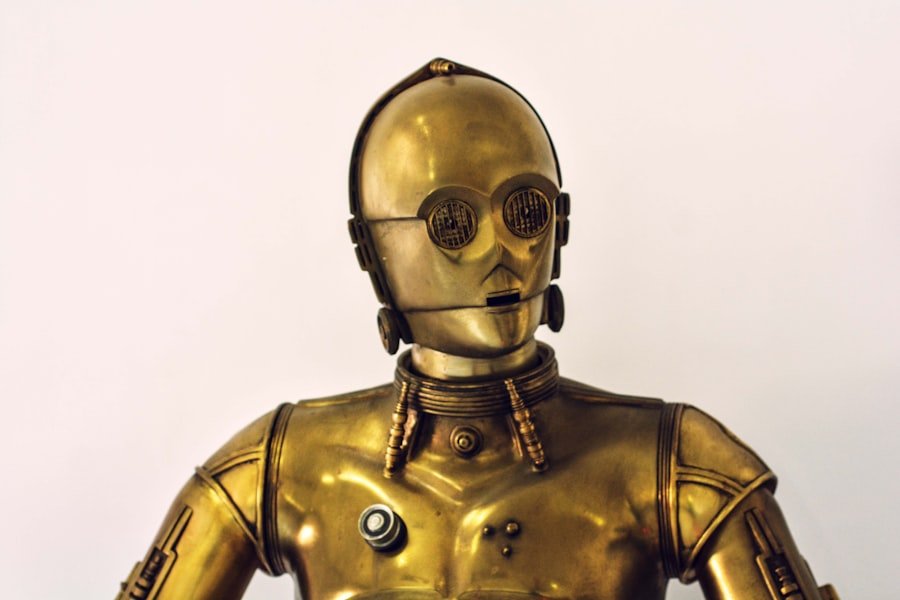The intersection of artificial intelligence (AI) and robotics represents one of the most transformative advancements in technology today. Robotics, the field dedicated to the design, construction, operation, and use of robots, has evolved significantly over the past few decades. With the integration of AI, robots are no longer limited to performing repetitive tasks in controlled environments; they are now capable of learning, adapting, and interacting with their surroundings in increasingly sophisticated ways.
This synergy between AI and robotics is paving the way for innovations that could redefine industries, enhance productivity, and even improve quality of life. AI empowers robots with cognitive capabilities that allow them to process information, make decisions, and learn from experiences. This has led to the development of autonomous systems that can operate in dynamic environments, such as homes, factories, and even public spaces.
The potential applications are vast, ranging from manufacturing and logistics to healthcare and personal assistance. As we delve deeper into the various facets of AI in robotics, it becomes evident that this technology is not merely a tool but a catalyst for a new era of intelligent machines that can augment human capabilities and address complex challenges.
Summary
- AI and robotics are revolutionising various industries by automating tasks and improving efficiency.
- AI enables robots to learn and adapt to new environments and tasks, making them more versatile and capable.
- AI enhances robot perception and sensing capabilities, allowing them to interact with their surroundings more effectively.
- AI enables robots to make decisions and plan actions based on complex data and scenarios, improving their problem-solving abilities.
- AI facilitates collaboration and coordination among robots, leading to more efficient and seamless teamwork in various applications.
AI in Robot Learning and Adaptation
One of the most significant contributions of AI to robotics is the ability of robots to learn from their experiences and adapt to new situations. Machine learning algorithms enable robots to improve their performance over time by analysing data from their interactions with the environment. For instance, a robotic vacuum cleaner equipped with AI can learn the layout of a home, identify obstacles, and optimise its cleaning path based on previous experiences.
This capability not only enhances efficiency but also allows for a more personalised service tailored to the specific needs of the user. Moreover, reinforcement learning—a subset of machine learning—has proven particularly effective in training robots to perform complex tasks. In this approach, robots receive feedback in the form of rewards or penalties based on their actions, encouraging them to explore different strategies to achieve their goals.
A notable example is Boston Dynamics’ Spot robot, which has been trained to navigate challenging terrains by learning from trial and error. Such adaptive learning mechanisms enable robots to operate in unpredictable environments, making them invaluable in fields such as search and rescue operations or disaster response scenarios.
AI in Robot Perception and Sensing

The ability of robots to perceive their environment is crucial for effective interaction and operation. AI enhances robot perception through advanced sensing technologies and algorithms that process sensory data. Robots are equipped with various sensors—such as cameras, LiDAR, and ultrasonic sensors—that gather information about their surroundings.
AI algorithms then analyse this data to identify objects, understand spatial relationships, and interpret complex scenes. For example, autonomous vehicles rely heavily on AI-driven perception systems to navigate safely on roads. These vehicles use a combination of cameras and LiDAR to detect pedestrians, other vehicles, traffic signs, and road conditions.
The AI processes this information in real-time, allowing the vehicle to make informed decisions about acceleration, braking, and steering. This level of perception is not limited to autonomous cars; drones used for agricultural monitoring or environmental surveys also utilise similar technologies to gather data about crops or wildlife habitats while avoiding obstacles.
AI in Robot Decision Making and Planning
Decision-making is a critical aspect of robotic functionality, particularly in dynamic environments where conditions can change rapidly. AI equips robots with the ability to evaluate multiple factors and make informed choices based on their objectives and constraints. This involves sophisticated planning algorithms that consider various scenarios and outcomes before executing actions.
For instance, in industrial automation, robots must often decide how to allocate resources efficiently while minimising downtime. AI-driven decision-making systems can analyse production schedules, machine availability, and workforce capabilities to optimise operations. In healthcare settings, surgical robots utilise AI to assist surgeons by providing real-time data analysis during procedures, helping them make critical decisions based on patient-specific information.
The integration of AI into decision-making processes not only enhances efficiency but also improves accuracy and safety in high-stakes environments.
AI in Robot Collaboration and Coordination
As robots become more prevalent in various sectors, the need for collaboration among multiple robotic systems has emerged as a key area of focus. AI facilitates coordination between robots, enabling them to work together seamlessly towards common goals. This is particularly evident in scenarios where multiple robots must perform tasks that require synchronisation or division of labour.
In warehouse automation, for example, fleets of autonomous robots collaborate to manage inventory efficiently. These robots communicate with one another using AI algorithms that allow them to share information about their locations and tasks. By coordinating their movements and actions, they can optimise picking routes and reduce congestion within the warehouse.
Similarly, in agricultural settings, swarms of drones can work together to monitor crop health or distribute fertiliser over large areas more effectively than a single drone could achieve alone.
AI in Robot Autonomy and Control

The level of autonomy exhibited by robots is largely determined by the sophistication of their AI systems. Autonomous robots can operate independently without human intervention, making decisions based on their programming and sensory input. This autonomy is particularly valuable in environments that are hazardous or inaccessible to humans.
For instance, underwater exploration robots are often deployed in deep-sea environments where human presence is impractical due to extreme conditions. These robots utilise AI algorithms to navigate complex underwater terrains while conducting scientific research or inspecting underwater infrastructure. Similarly, autonomous drones are increasingly used for surveillance or delivery services in urban areas, relying on AI for navigation and obstacle avoidance.
The ability to operate autonomously not only enhances efficiency but also expands the potential applications of robotics across various domains.
AI in Robot Safety and Ethical Considerations
As robots become more integrated into society, safety and ethical considerations surrounding their use have gained prominence. The deployment of AI-driven robots raises questions about accountability, transparency, and the potential for unintended consequences. Ensuring that robots operate safely around humans is paramount; thus, rigorous testing and validation processes are essential before deploying these systems in public spaces.
Moreover, ethical considerations extend beyond safety; they encompass issues such as job displacement due to automation and the implications of decision-making algorithms that may inadvertently perpetuate biases. For instance, if an AI system used in hiring processes is trained on historical data that reflects societal biases, it may inadvertently favour certain demographics over others. Addressing these ethical dilemmas requires a multidisciplinary approach involving technologists, ethicists, policymakers, and the public to establish guidelines that promote responsible development and deployment of robotic systems.
Future Implications of AI in Robotics
The future implications of AI in robotics are vast and multifaceted. As technology continues to advance at an unprecedented pace, we can expect robots to become increasingly capable and integrated into everyday life. The potential for personalised robotic assistants that cater to individual needs—be it in healthcare, education, or home management—could revolutionise how we interact with technology.
Furthermore, as AI algorithms become more sophisticated, we may witness the emergence of collaborative human-robot teams that enhance productivity across various sectors. In manufacturing environments, for example, humans could work alongside intelligent robots that adapt to their workflows and assist with complex tasks rather than simply replacing human labour. However, this future also necessitates careful consideration of regulatory frameworks that govern the use of robotics in society.
Policymakers will need to address issues related to privacy, security, and ethical standards as these technologies become more pervasive. The dialogue surrounding the implications of AI in robotics must be inclusive and forward-thinking to ensure that advancements benefit society as a whole while mitigating potential risks associated with this transformative technology.
The integration of artificial intelligence (AI) in the field of robotics has revolutionised the way machines interact with their environment. This transformation has been highlighted in a recent article on how iGaming game developers rose to the top, showcasing the innovative ways in which AI is being utilised to enhance gaming experiences. Just as AI has enhanced the capabilities of robots, it has also played a crucial role in the development of cutting-edge gaming technologies. The article explores how AI has enabled game developers to create more immersive and engaging experiences for players, demonstrating the far-reaching impact of this technology across various industries.
FAQs
What is AI?
AI, or artificial intelligence, refers to the simulation of human intelligence in machines that are programmed to think and act like humans. This includes tasks such as learning, problem-solving, and decision-making.
What is Robotics?
Robotics is the branch of technology that deals with the design, construction, operation, and use of robots. Robots are programmable machines that can carry out a series of complex actions automatically.
How is AI transforming the field of robotics?
AI is transforming the field of robotics by enabling robots to perform more complex tasks, learn from their environment, and make autonomous decisions. This has led to advancements in areas such as manufacturing, healthcare, and transportation.
What are some examples of AI in robotics?
Some examples of AI in robotics include autonomous vehicles, robotic surgery systems, and industrial robots that can adapt to changing production environments. AI also enables robots to interact with humans more effectively through natural language processing and computer vision.
What are the benefits of AI in robotics?
The benefits of AI in robotics include increased efficiency and productivity, improved safety in hazardous environments, and the ability to perform tasks that are difficult or dangerous for humans. AI also has the potential to revolutionize industries and create new job opportunities.
